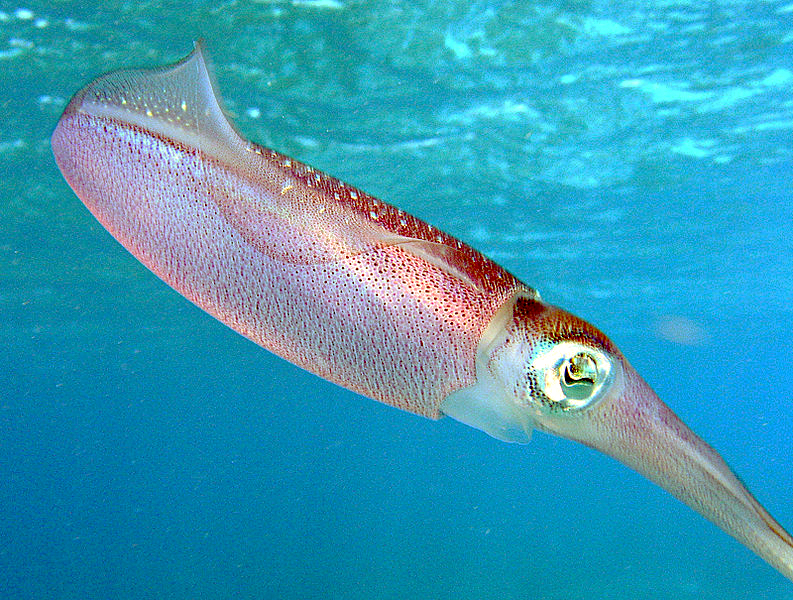The Carribbean Reef Squid
>> Friday, July 24, 2009
I went snorkeling yesterday with my hubby at Secret Harbor on the East End and one of the many forms of sea life I saw was the Caribbean Reef Squid (Sepioteuthis sepioidea). Now you may not have realized it yet, but I have a thing for invertebrates, so I was inspired to do this post. Plus, I had some groovy lab drawings from a squid dissection that I labeled on the compy for you. If you have any questions about the functions of any of the parts labeled, just let me know so that I can answer any questions for you. This is just the basics of this really alien and beautiful creature.
This squid is commonly found throughout the Caribbean and Floridian waters. They are usually found in shallow waters (1 meter or less) and are commonly seen in schools. I usually see between 5 and 15, but apparently will congregate in groups as large as 40. They are mollusks so, believe it or not, are related to the Queen Conch I posted about last week. Since they are further classified as cephalopods, they are more closely related to octopuses, cuttlefish, nautiluses and more. They are quite pretty and many time I have seen them flash colors at each other or in time. They are very colorful, almost iridescent creatures. The speed of color change in them is quite fast as well. In fact, they can change color much faster than a chameleon.
They swim (or hover) using the fins (click image below for larger view) on the sides of the mantle. If they need to get away quickly, they use a form of jet propulsion. If they still can't get away, they ink.
When they aren't hovering, they eat. They eat a lot. The Caribbean Reef Squid, like most squid can consume almost 50% their body weight in food a day. They are carnivores and eat a variety of prey including crustaceans, small fish, and even other mollusks.
One of the things that makes squid and cephalopods so interesting to study is their fantastic sight. The reason they are so studied is they are not even close to being related to vertebrates, yet process images similar to us. This means that their sight and eyes evoloved independently. The main differences are the ammount of visual pigment. They usually have one, we have three. They pretty much only see in greyscale, which is suprising considering the amazing display of colors they put on for us! There is one exception, however, but we won't complicate things. You can learn more about the coevolution and how their eyes work here.
 fig 3. internal anatomy of male squid
fig 3. internal anatomy of male squidBesides all the info I just gave you, did I mention that they are awesome to swim with? I've only seen them at a few beaches here and absolutely everytime I see them, it's mesmerizing.
I hope you enjoyed my sketches. Happy learning!
Read more...





















